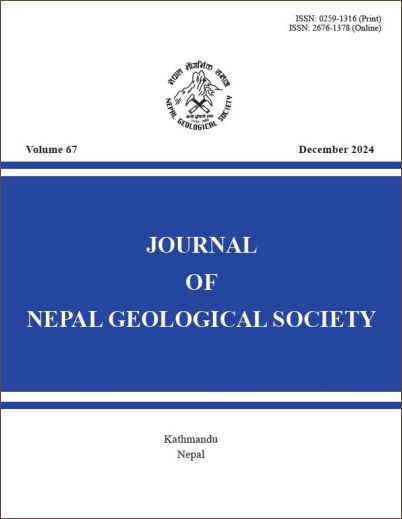Groundwater Potential Mapping in Central Hills of Nepal: A Comparative Study of Conventional and Modified Frequency Ratio Methods
DOI:
https://doi.org/10.3126/jngs.v67i1.74580Keywords:
Groundwater potential mapping, Modified frequency ratio, springs, GISAbstract
Springs serve as lifelines for rural communities in the Himalayan region, providing essential domestic water supplies and irrigation purposes. The depletion of streams and spring sources poses a significant environmental menace, threatening water access for these communities. To ensure sustainable access to groundwater for local communities, a thorough assessment of Himalayan hydrogeology is essential. A map of groundwater potential has been prepared using Geographic Information Systems (GIS), employing the Conventional Frequency Ratio (FR) and Modified Frequency Ratio (MFR) methods and evaluated the predictive performance of these in the Shivapuri Rural Municipality, Central Nepal. The MFR method excels in classifying groundwater potential areas with an AUC of 0.80, indicating an 80% success rate, compared to the FR method's AUC of 0.65 (65% success). Both methods share an AUC of 0.60 for the prediction rate curve, implying similar performance in outlining potential spring zones. However, the MFR method better distinguishes between high and low potential zones. This study provides critical information that can be used to support decision-making processes for the effective management and utilization of groundwater resources in the region.
Downloads
Downloads
Published
How to Cite
Issue
Section
License
© Nepal Geological Society




